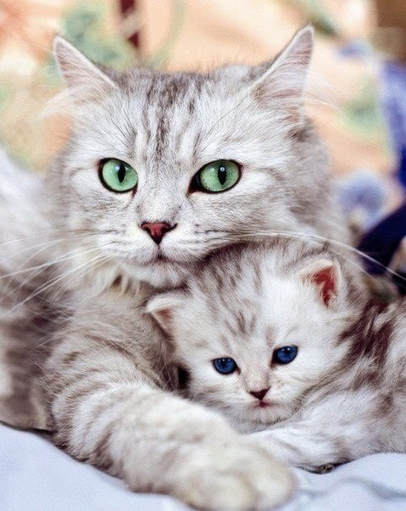Puppy Potty Training
Contrary to popular belief, house-training a puppy requires far more than a few stacks of old newspapers-it calls for vigilance, patience and plenty of commitment. By following the procedures outlined below, you can minimize house soiling incidents, but virtually every puppy will an accident in the house, and more likely, several. Expect this- it's part of raising a puppy. The more consistent you are in following the basic house-training procedures, the faster your puppy will learn acceptable behavior. It may take several weeks to house-train your puppy, and with some of the smaller breeds, it may take even longer.
|
Establish a Routine
Like babies, puppies do best on a regular schedule. Take your puppy outside frequently-at least every two hours-and immediately after he wakes up from a nap, after playing and after eating or drinking. Praise your puppy lavishly every time he eliminates outdoors- you can even give him a small treat- but always remember to do so immediately after he's finished eliminating, not after he comes back in the house. This step is vital, because rewarding your puppy for eliminating outdoors is the only way he'll know what's expected of him. Pick a bathroom spot near to the door, and always take your puppy to that spot using a leash. Take him out for a longer walk or some playtime only after he has gone potty. If you clean up an accident in the house, take the soiled rag or paper towels and leave them in the potty spot you have chosen outside. The smell will help your puppy to recognize the area as the place he is supposed to go potty. During elimination, use a word or phrase like "Go Potty" that you can eventually use to remind him what to do. Put your puppy on a regular feeding schedule and feed him a high-quality diet to make house-training easier. Depending on their age, puppies usually need to be fed three or four times and day. Feeding your puppy at the same time each day will make it more likely that he will go potty at the same times during the day. It will make house training easier for both of you. Keep Your Eyes Peeled Don't give your puppy an opportunity to soil in the house; keep an eye on him whenever he's indoors. You can tether him to yourself with a six-foot leash or use a baby gate to keep him in the room where you are. Watch for signs that he needs to go potty, like sniffing around or circling. When you see these signs, immediately grab the leash and take him outside to his bathroom spot. If he goes potty praise him lavishly and reward him with a small treat. Confinement When you're unable to watch your puppy at all times, he should be confined to an area small enough that he won't want to go potty there. The space should be just big enough for him to comfortably stand, lie down and turn around in. Crate training your puppy is a great way to confine him safely. If your puppy has spent several hours in confinement, you'll need to take him directly to his bathroom spot as soon as you let him out and praise him when he eliminates. Paper Training This is not recommended if you want your puppy to eventually be fully potty trained to go outside. It is very confusing for your puppy. It can also potentially cause your puppy potential lifelong problems with confusing where and when it is okay to go potty and a surface preference. It is better to use the training methods we have outlined here. |
Oops!
Expect your puppy to have a few accidents in the house- it's a normal part if house-training. Here's what to do when it happens:
It's extremely important that you use the supervision and confinement procedures outlined above to prevent the number of accidents. If you allow your puppy to go potty frequently in the house, he'll get confused about where he's supposed to eliminate, which will prolong and make the house-training process more difficult and frustrating for you both. Other Types of House Soiling Problems If you've consistently followed the house-training procedures and your puppy continues to have accidents in the house, there may be another reason for his behavior.
|
Litter Box Training for your Cats and Kittens
Most of us know cats are finicky eaters, but they can also be pretty picky when it comes to the other end of digestive process- making use of a litter box. Fortunately, the following suggestions should keep your kitty from "thinking outside the box."
|
Location, Location, Location: Most people are inclined to place the litter box in an out-of-the-way spot to minimize odor and prevent cat litter from being tracked throughout the house. A few things to keep in mind when deciding where to place the litter box.
The litter box should be kept in a spot the affords your cat some privacy yet is also conveniently located. If you place the litter box in a closet or bathroom, make sure you have the door wedged open from both sides to prevent the kitty getting locked in or locked out. Pick of the litter: Research has shown that most cats prefer fine-grained litters, presumably because it has a softer feel. Most of the clumping litters have finer grains then the typical clay litters. Many cats are put off by the odor of scented or deodorant litters. Also, room deodorize or air fresheners near the litter box. You can however put down a thin layer of baking soda on the bottom of the litter box to help absorb odors without repelling your cat, and odors shouldn't be a problem if you keep the litter box clean. If you find the litter box odor offensive, your cat probably finds it even more offensive and won't want to use it. What's the Magic Number? You should have at least as many litter boxes as you have cats. That way, none of them will ever be prevented from being able to use them or having to wait because it is already occupied. You might consider placing the litter boxes in a few different places around the house. That way, no one cat can prevent the others from getting access. We also recommend that you place at least one litter box on each level of your house. |
Keeping it Clean:
To meet the needs of the most discriminating cats, feces should be scooped out of the litter box daily. Replacing the litter depends on the number of cats you have, the number of litter boxes and the type of litter you use. Twice a week is general guideline for clay litter. For scoopable litter, it should be changed every two or three weeks. Only wash litter boxes with soap and water. Many other cleaning products are smell too strongly or are even toxic to your kitty. Liner Notes and Depth of Litter: Some cats don't mind having a plastic liner in the box, while others may not. You should experiment to see if your cat is bothered by the liner in the box. If you do use the liners make sure its anchored in place, this way it won't catch on your cat's claws and be pulled out of place. More is not better when it comes to the depth of the litter in the box. Most cats won't use litter that's more than about 2" deep. "Litter-Training" Cats: There's really no such thing as "litter-training" a cat in the same way one would house-train a dog. A cat doesn't need to be taught what to do with a litter box because instincts will generally take over. The only thing you need to do is provide an acceptable, accessible litter box using the suggestions above. If Problems Develop: If your cat begins to eliminate in areas other than the litter box, your first call should always be to your veterinarian. Many medical conditions can cause a change in a cat's litter box habits. |



